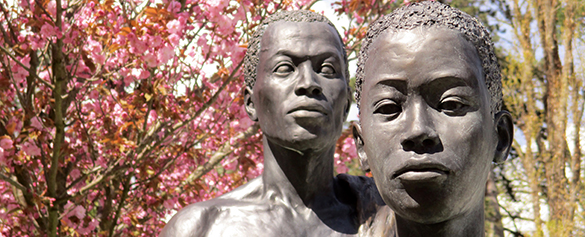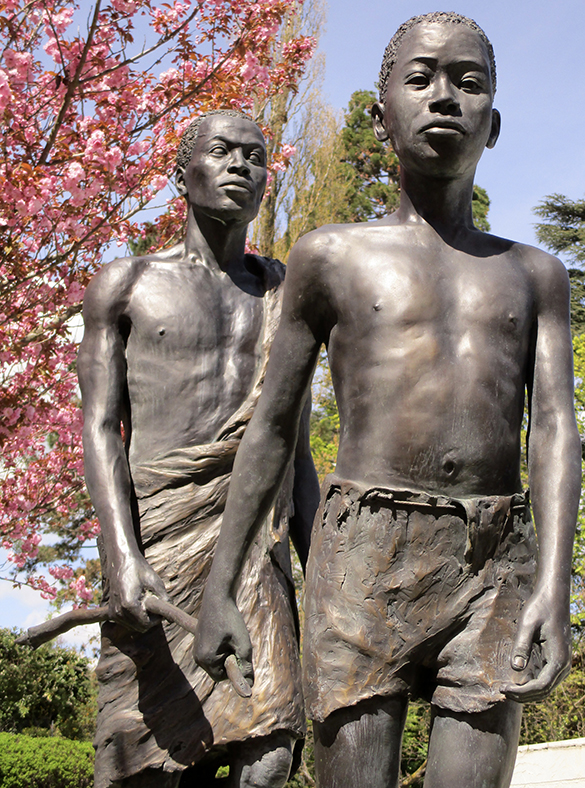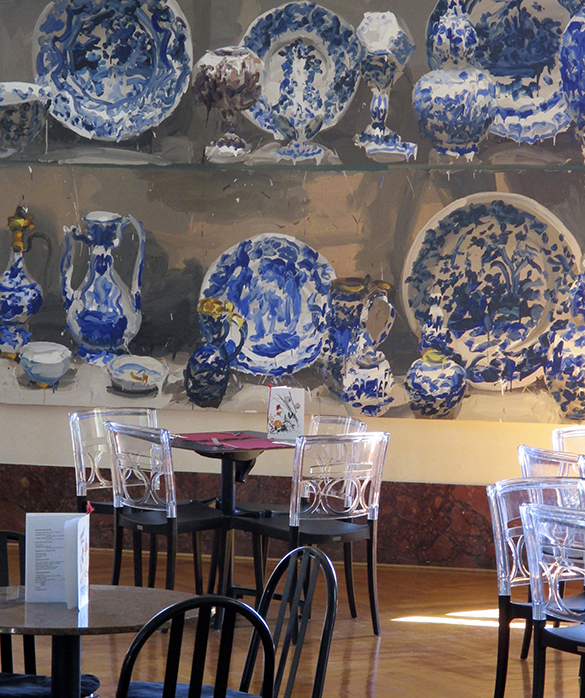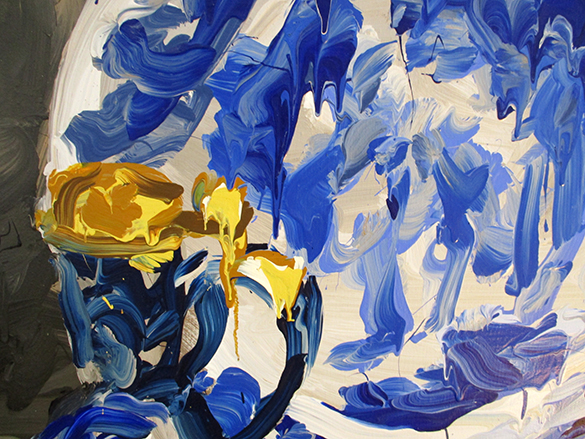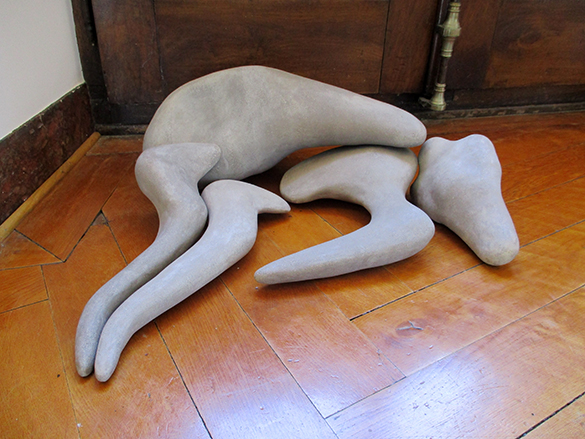I am in transit at Amsterdam’s Schipol airport. Everyone is in a controlled rush. Irritated travellers swerve around me when I stop to take a photo of two huge figures that sit in the middle of the walkway. Before I too move on, I feel the surface of a massive bronze shoulder; it is cold and assertive. I tap my knuckle against it and am rewarded with a satisfying note, deep and rich.
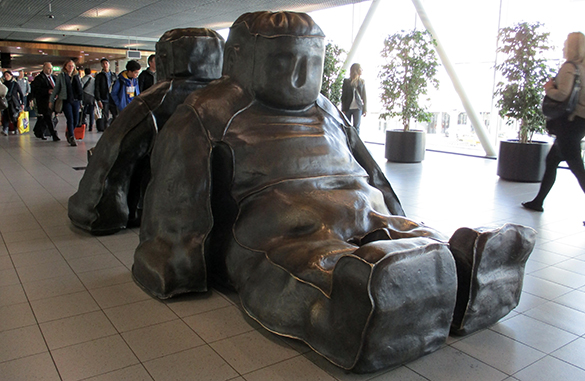
Tom Claassen “Two incredible sitting black snowmen” Bronze 2000
I have seen Tom Claassen‘s “Two incredible sitting black snowmen” before. I wasn’t wowed. However, finding them here really grabs my attention and flicks the mental switch on a little bit of neuronal circuitry that tells me “This is beautiful stuff!” I guess it’s about context.
Claassen’s figures look like two tired people. Their sitting pose is weighty but anatomic nevertheless. I am reminded of a couple of breathless fat kids after PE. At the same time, with their seams and soft corners, they represent battered baggage waiting to be collected. The in-context appeal comes from the fact that they represent us, how we feel and what we take with us when we travel. Passengers and luggage, as far as airlines and airports are concerned, are commodities that have to be moved around efficiently. Inevitably, our air travel experience involves total depersonalisation. So, just look at the lack of any human expression on the faces of our bronze friends!
Another subliminal bobs to the surface. It’s the fat kid thing combined with the resemblance to couches upon which we sit and watch television. The western world is currently gripped by an epidemic of obesity. Hence, these figures are totally contemporary in their placement at Schipol. With a kind of tired ambivalence we just accept the inconvenience and discomfort of air travel as we expect convenient access to comfort food.
No surprise that, given the chance, I would rename Claassen’s masterpiece “Big luggage people.” Bravo team Classens – Schipol!

